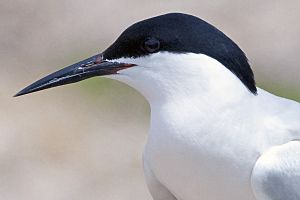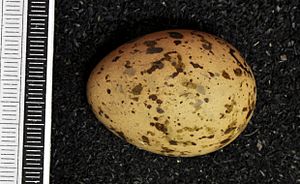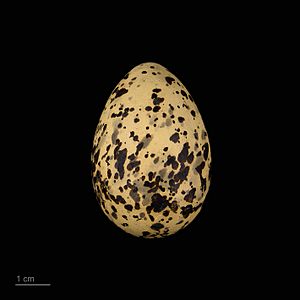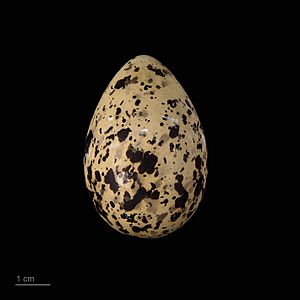Roseate tern facts for kids
Quick facts for kids Roseate tern |
|
|---|---|
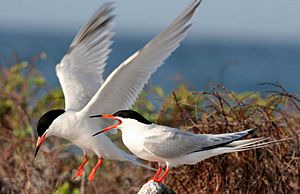 |
|
| Conservation status | |
| Scientific classification | |
| Genus: |
Sterna
|
| Species: |
dougallii
|
 |
|
The roseate tern (Sterna dougallii) is a beautiful seabird. It belongs to the tern family, which is part of the larger Laridae family. The name "roseate" comes from the bird's pink chest feathers. You can see these pink feathers when it's time for them to have babies.
Contents
About the Roseate Tern
What's in a Name?
The roseate tern was first described in 1813 by an English naturalist named George Montagu. The scientific name Sterna comes from an old English word for "tern." The second part, dougallii, honors a Scottish doctor and collector named Peter McDougall.
Where Do They Live?
Roseate terns live in many parts of the world. They have different groups, called "races," that live in different places. These groups look a little different, mostly in the color of their beaks.
One group, S. d. dougallii, breeds along the Atlantic coasts of Europe and North America. When winter comes, they fly south to warmer places like the Caribbean and west Africa. Sadly, their numbers have been going down for a long time. But thanks to special efforts, their numbers are now growing in some places. A great example is Rockabill Island in Ireland. This island is now home to most of the roseate terns in Europe.
Other groups live in tropical areas. For example, S. d. korustes and S. d. bangsi live from east Africa all the way to Japan. These birds have more red on their beaks. Another group, S. d. gracilis, lives in Australia and New Caledonia.
What Does a Roseate Tern Look Like?
The roseate tern is a medium-sized bird. It is about 33 to 36 centimeters (13 to 14 inches) long. Its wings can spread out 67 to 76 centimeters (26 to 30 inches) wide.
It has a thin, sharp, black beak. The base of the beak turns red during the breeding season. This red color is even brighter in the groups that live in warmer places. Roseate terns have shorter wings and flap them faster than other similar terns.
Their upper wings are light gray, and their undersides are white. This makes them look very pale when they fly. Adult birds have very long, flexible tail feathers and orange-red legs. In summer, their bellies get a pinkish color, which is how they got their name!
How Roseate Terns Live
Food and Feeding Habits
Roseate terns are excellent hunters. They catch fish by diving headfirst into the sea. They almost always hunt in the ocean. They don't usually fish in fresh water, but they might visit coastal lagoons to take a bath.
When a male tern wants to impress a female, he will offer her a fish. This is part of their special courtship dance.
Sometimes, roseate terns are a bit sneaky! They might steal fish from other seabirds, like puffins. This helps them get enough food, especially when the weather is bad. When fish swim deeper, puffins can dive deeper to catch them. Then, the terns can just take the fish from the puffins!
In winter, the terns' foreheads turn white, and their beaks become completely black. Young roseate terns have a scaly look, similar to young Sandwich terns.
Reproduction and Life Cycle
These birds build their nests in groups called colonies. They often nest with other seabirds on coasts and islands. They make a simple nest on the ground, often in a small dip or hidden under thick plants. A female tern usually lays one or two eggs, but sometimes three.
Roseate terns are not as protective of their nests as some other terns. They often rely on Arctic and common terns in the same colony to help defend their young.
Some animals like the white-bellied sea-eagle and silver gull eat their eggs and chicks. Other animals like the turnstone, black rat, and King's skink might also be predators.
What Do They Sound Like?
The roseate tern has a very special call. It sounds like chuwit. This sound is quite different from other terns, making it easy to recognize.
Protecting the Roseate Tern
In the past, in the late 1800s, these birds were hunted. People used their feathers to decorate hats. More recently, their numbers have gone down because of more competition for food. Also, large gulls, whose numbers have grown, sometimes eat their eggs and chicks. As of 2019, the roseate tern is the rarest seabird that breeds in the UK.
The biggest group of roseate terns in Europe lives in Ireland. This colony is on Rockabill Island in County Dublin. In 2013, over 1200 pairs nested there! Another important colony is at Lady's Island Lake in County Wexford.
To help these birds, people have put out special nestboxes. Roseate terns love these boxes! They help protect the young birds from predators like herring gulls. This has greatly helped more chicks survive. For example, on Coquet Island in England, the number of pairs grew a lot after nestboxes were added. Similar efforts have been made at the Anglesey tern colonies in Wales.
In 2018, for the first time in over ten years, a pair of terns successfully raised two chicks on the Skerries. This happened after a project by the RSPB. They placed new nest boxes, played tern calls to attract birds, and even used fake decoys!
The roseate tern is protected by special plans in the UK and other countries. One big threat to them is global warming. This can change where their food fish live. The roseate tern is also part of an international agreement to protect birds that migrate.
In Canada, the roseate tern is listed as "Threatened." In the United States, the group in the northeast is "Endangered," and the group in the Caribbean is "Threatened."
- Roseate tern - Species text in The Atlas of Southern African Birds
See also
 In Spanish: Charrán rosado para niños
In Spanish: Charrán rosado para niños



